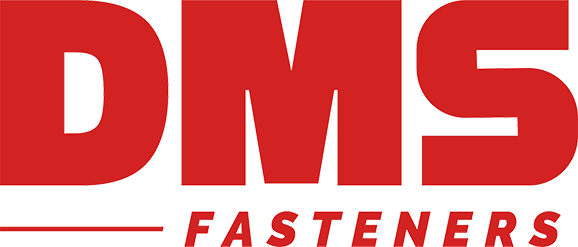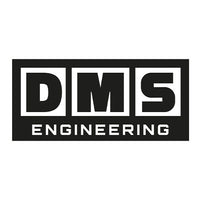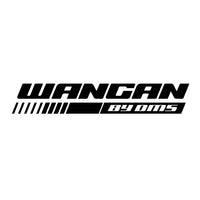Fasteners are indispensable components in the engineering, construction, and manufacturing industries. They are used to secure and hold materials or components together, providing a strong and stable structure. With an array of fasteners available in the market, it is essential to understand the different types of drive styles to choose the right one for your specific application. In this comprehensive guide, we will explore the various drive styles in fasteners, their advantages and disadvantages, and their common applications.
- Slotted Drive Style
The slotted drive style, also known as the flat head, is one of the oldest and most common types of fastener drives. It features a single straight slot across the head, which can be turned using a flat-blade screwdriver. Slotted fasteners are often used in applications where ease of use and simplicity are prioritised.
Advantages:
- Easy to use with a wide variety of tools.
- Simple design.
Disadvantages:
- Limited torque capacity.
- High chance of the driver slipping out of the slot, causing damage to the fastener and surrounding materials.
Common applications:
- Woodworking projects.
- Light-duty construction.
- Phillips Drive Style
The Phillips drive style was invented in the 1930s to address the limitations of the slotted drive style. It features a cruciform-shaped recess, allowing for better torque transmission and reduced chances of the driver slipping out. The Phillips drive is one of the most popular fastener drive styles and is commonly used in various industries.
Advantages:
- Improved torque capacity compared to slotted drives.
- Reduced risk of the driver slipping out of the recess.
Disadvantages:
- Still prone to cam-out, where the driver slips out of the recess under high torque.
- Not ideal for heavy-duty applications.
Common applications:
- General construction.
- Electronics and appliances.
- PoziDriv Drive Style
The PoziDriv drive style is an improvement on the Phillips drive, developed to reduce cam-out and provide a more secure connection. It features a cruciform-shaped recess with additional diagonal lines, providing better engagement between the driver and the fastener.
Advantages:
- Reduced cam-out compared to Phillips drives.
- Higher torque capacity.
Disadvantages:
- Requires a specific PoziDriv driver, as using a Phillips driver may result in damage to the fastener or driver.
- Not as widely available as Phillips or slotted drives.
Common applications:
- Automotive industry.
- Heavy-duty construction.
- Hexagonal or Hex Socket Drive Style
The hexagonal or hex socket drive style, also known as the Allen or Inbus drive, features a hexagonal-shaped recess. It requires a hexagonal-shaped driver, known as an Allen key or hex key, to turn the fastener. Hex socket fasteners provide excellent torque transmission and are widely used in various applications.
Advantages:
- High torque capacity.
- Reduced risk of cam-out.
- Can be easily accessed in tight spaces.
Disadvantages:
- Requires a specific hex key or driver, which may not be as readily available as other drive types.
Common applications:
- Machinery and equipment assembly.
- Bicycles and furniture.
- Torx Drive Style
The Torx drive style, also known as the star drive, features a six-point star-shaped recess. It offers superior torque transmission and reduces cam-out, making it suitable for heavy-duty applications. Torx fasteners require a specific Torx driver or bit to turn them.
Advantages:
- High torque capacity.
- Minimal risk of cam-out.
- Even distribution of force, reducing the risk of damage to the fastener and surrounding materials.
Disadvantages:
- Requires a specific Torx driver or bit, which may not be as readily available as other drive types.
- Can be more expensive than other drive styles due to the specialised tooling required.
Common applications:
- Automotive and aerospace industries.
- Heavy-duty construction and assembly.
- Robertson or Square Drive Style
The Robertson or square drive style features a square-shaped recess, offering excellent torque transmission and reduced risk of cam-out. It requires a square-shaped driver, known as a Robertson driver or square driver, to turn the fastener. Robertson drive fasteners are popular in Canada and the United States, although they are less common in the UK.
Advantages:
- High torque capacity.
- Reduced risk of cam-out.
- Can be easily accessed in tight spaces.
Disadvantages:
- Not as widely available in the UK compared to other drive styles.
- Requires a specific Robertson driver, which may not be as readily available as other drive types.
Common applications:
- Woodworking and construction.
- Electrical and electronic applications.
- Tri-Wing Drive Style
The tri-wing drive style features a triangular recess with three curved wings, offering high torque transmission and excellent security due to its unique design. Tri-wing fasteners require a specialised tri-wing driver or bit to turn them. Due to their increased security, tri-wing fasteners are often used in applications where tampering is a concern.
Advantages:
- High torque capacity.
- Increased security due to the unique design.
- Reduced risk of cam-out.
Disadvantages:
- Requires a specialised tri-wing driver or bit, which may be difficult to find.
- Not suitable for general-purpose applications due to the specialised tooling required.
Common applications:
- Security-sensitive applications, such as aerospace and defence industries.
- Electronics and high-security devices.
- Spanner or Snake Eye Drive Style
The spanner or snake eye drive style features two small, round holes opposite each other on the head of the fastener. It requires a specialised spanner driver or bit to turn the fastener, providing increased security due to the unique design. Spanner fasteners are often used in applications where tampering is a concern.
Advantages:
- Increased security due to the unique design.
- Reduced risk of cam-out.
Disadvantages:
- Requires a specialised spanner driver or bit, which may be difficult to find.
- Not suitable for general-purpose applications due to the specialised tooling required.
Common applications:
- Security-sensitive applications, such as in public facilities and equipment.
- Electronics and high-security devices.
Therefore...
Understanding the various drive styles in fasteners is crucial in choosing the right fastener for your specific application. Each drive style has its advantages and disadvantages, as well as common applications in which they are most suitable. When selecting a fastener, consider factors such as torque capacity, accessibility, tool availability, and security requirements to ensure a successful project outcome.



